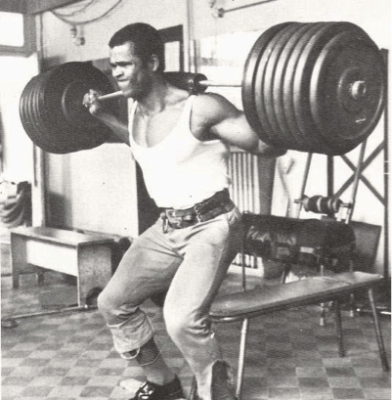High-volume training works wonders for some bodybuilders. Devoting 4 to 5 days per week to training, and spending 45 to 75 minutes in each session allows intermediate and advanced trainers to effectively stimulate each body part, while still allowing at least two full days for recovery. This is just about the ceiling that every bodybuilder should utilize when training, in terms of volume. However, there is a time when the bodybuilder needs to increase the volume even more. For times like this, we have the perfect workout for you!
This sort of training, over time, can lead to serious wear and tear on the muscles and tendons of the body. Even if you are an advanced bodybuilder who is chemically assisted, it’s still not likely you will be able to add size to your physique with a training regimen such as this one. Rather, this type of routine is designed for the advanced bodybuilder seeking to etch in detail as the show approaches.
Now that we have the warnings out of the way, proceed at your own risk! Here is the Extreme High Volume Training body part split.
Monday
- AM routine: Chest (20 sets)
- PM routine: Shoulders (12 sets) & Triceps (12 sets)
Tuesday
- AM routine: Quadriceps (20 sets)
- PM routine: Hamstrings (12 sets) & Calves (12 sets)
Wednesday
- AM routine: Back (20 sets)
- PM routine: Biceps (12 sets) & Forearms (8 sets)
Thursday
- AM routine: Chest (20 sets)
- PM routine: Shoulders (12 sets) & Triceps (12 sets)
Friday
- AM routine: Quadriceps (20 sets)
- PM routine: Hamstrings (12 sets) & Calves (12 sets)
Saturday
- AM routine: Back (20 sets)
- PM routine: Biceps (12 sets) & Forearms (8 sets)
Sunday
- REST
- No weights, no cardio today
Cardio should be added to this routine as well. After all, this is definitely a pre-contest routine, designed to help in etching in detail. Cardio should be performed first thing in the morning upon rising, before a single calorie has been ingested. This will ensure that you are burning stored fat, as opposed to glycogen (sugar) present in the body. For elite athletes who are in decent shape, 30 minutes of morning cardio should suffice.
Care should be taken to preserve the immune system when facing a tough routine such as this. We grow and heal when we rest, and training 12 to 18 hours per week in this manner. If you significantly reduce your caloric consumption while at the same time increasing your workload in such an intense manner, it’s likely you will burn a great deal of muscle in a very short period of time, or come down with a cold or the flu due to your compromised immune function. Instead, it would be preferable to begin your transition from off-season to pre-contest by starting this training routine while engaging in your off-season diet. After you’ve trained in this manner for two weeks and have developed some sort of tolerance to the high volume, you will be in a better position to reduce calories and enter the dieting phase. As always, listen to your body. If you realize ahead of time that this is indeed too much training, and you’re only doing it to etch detail into the physique before a show, you should see good results!

